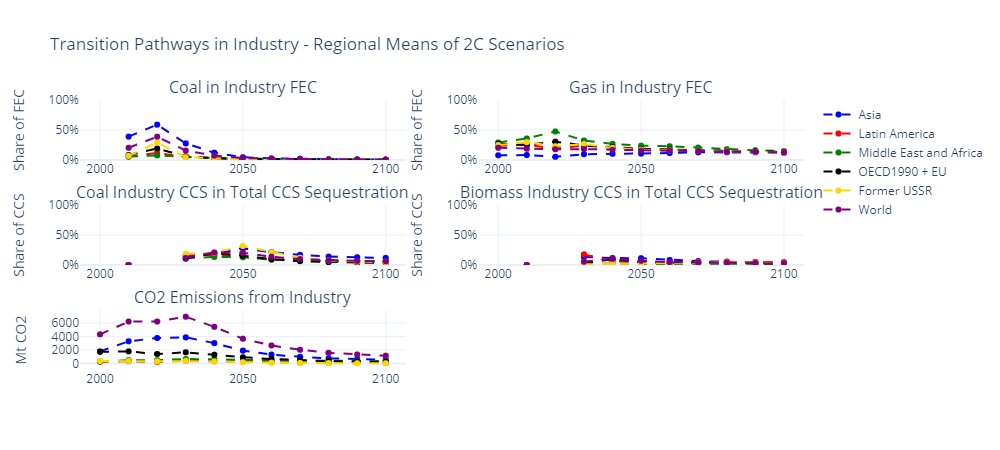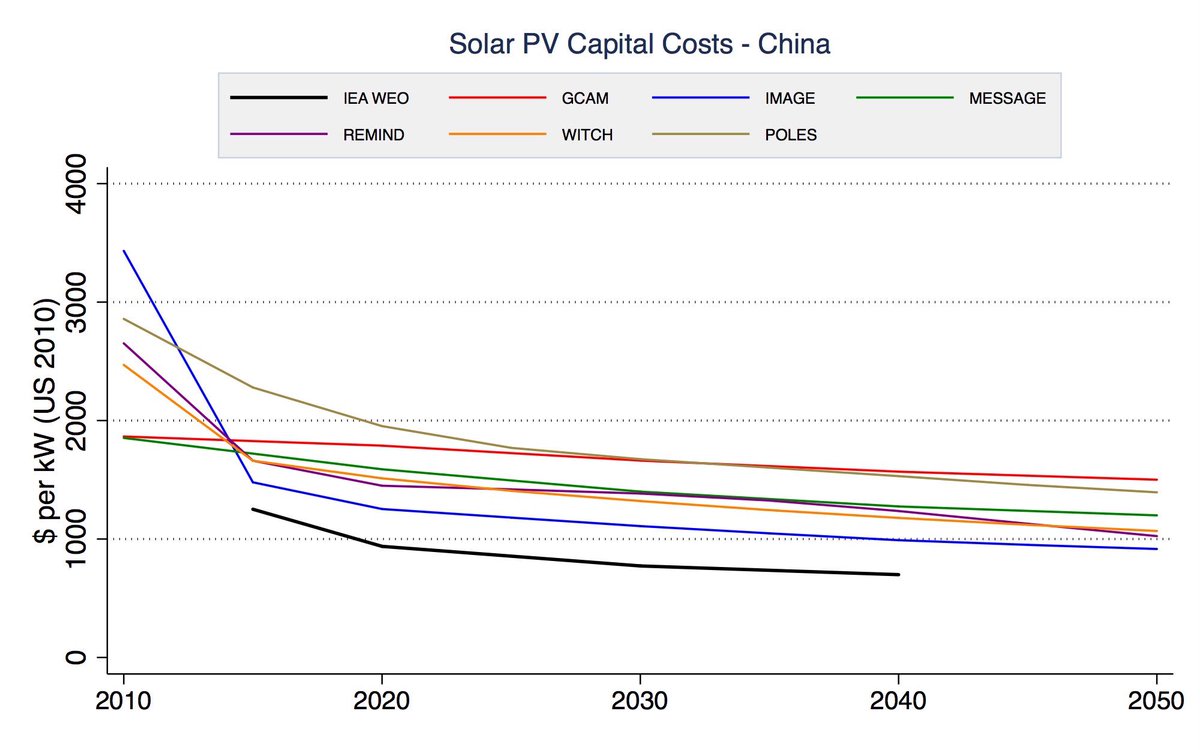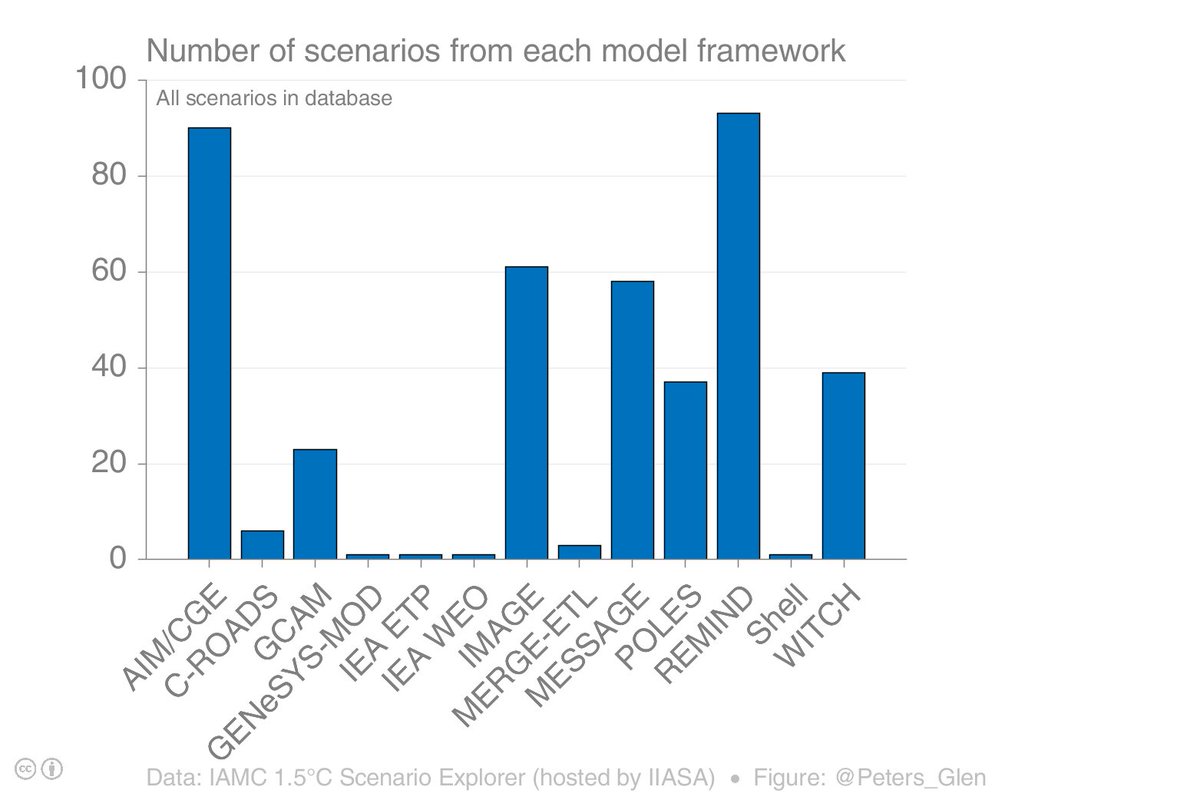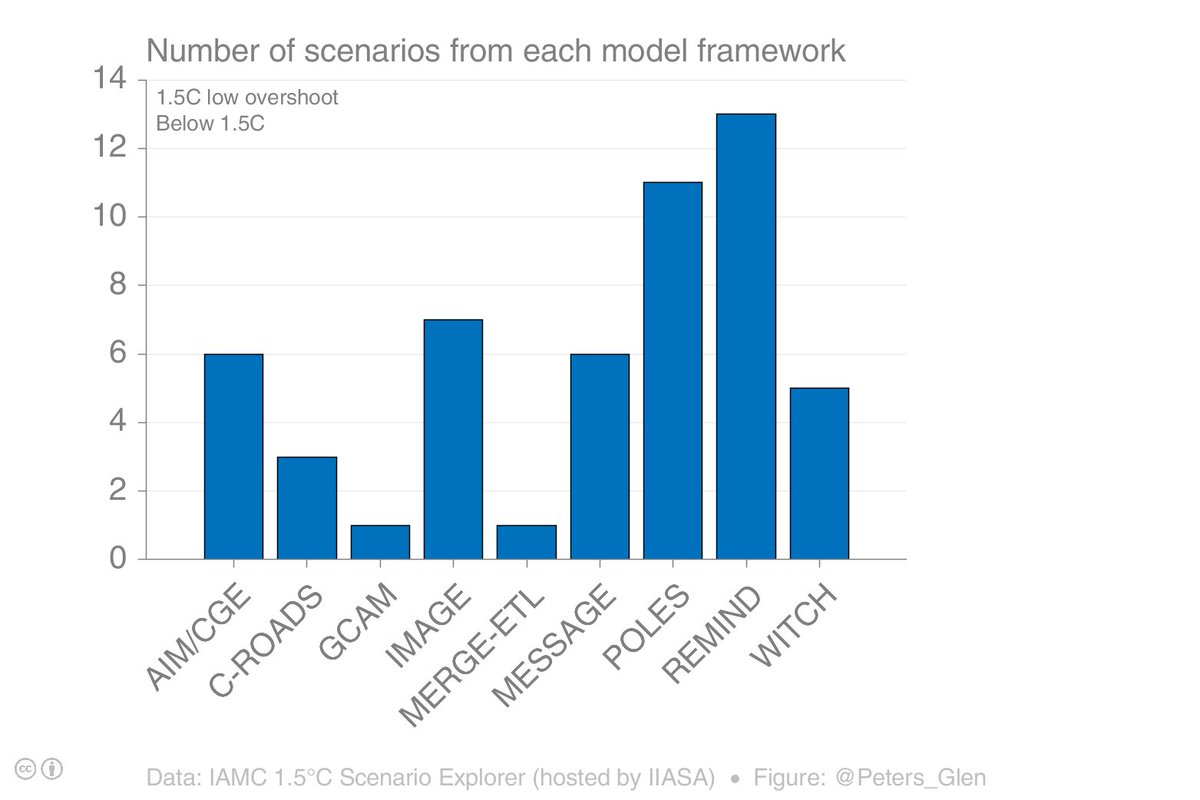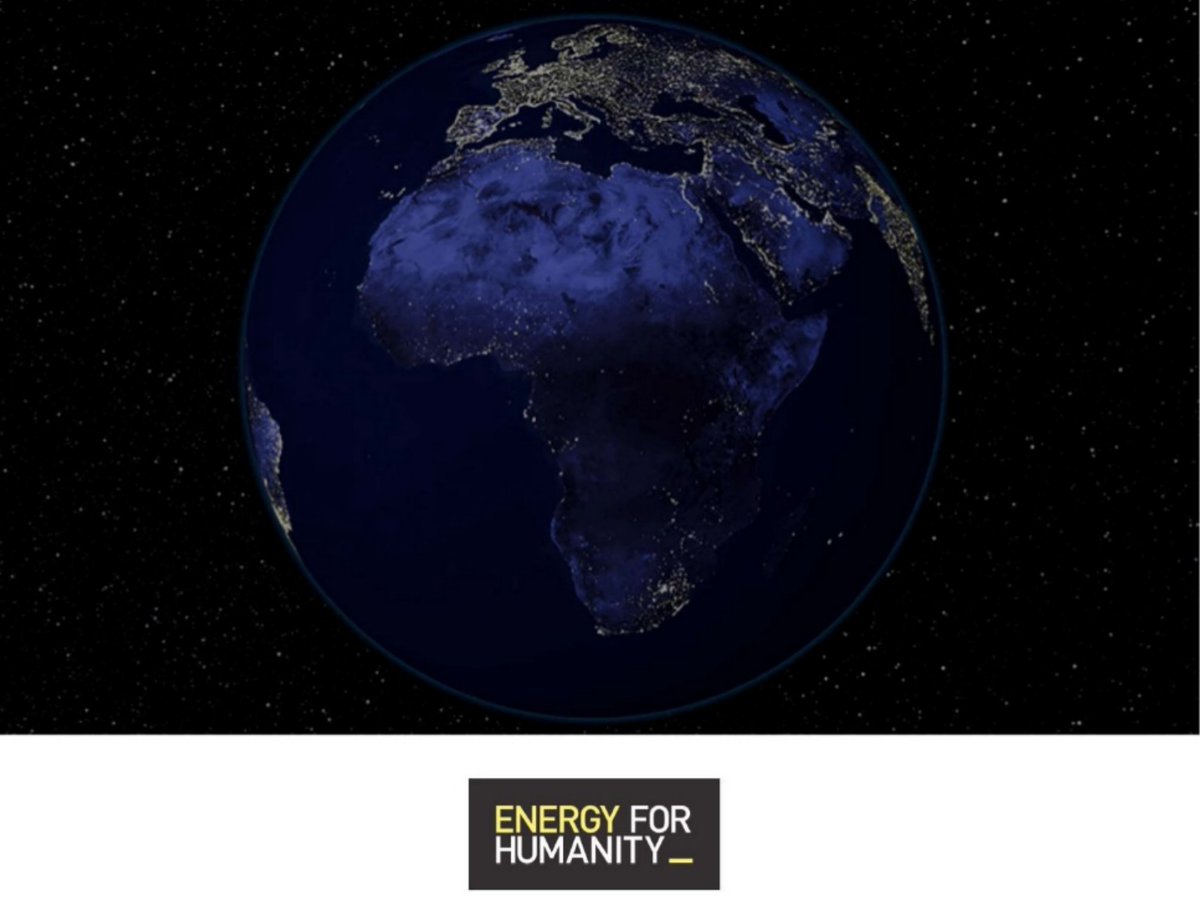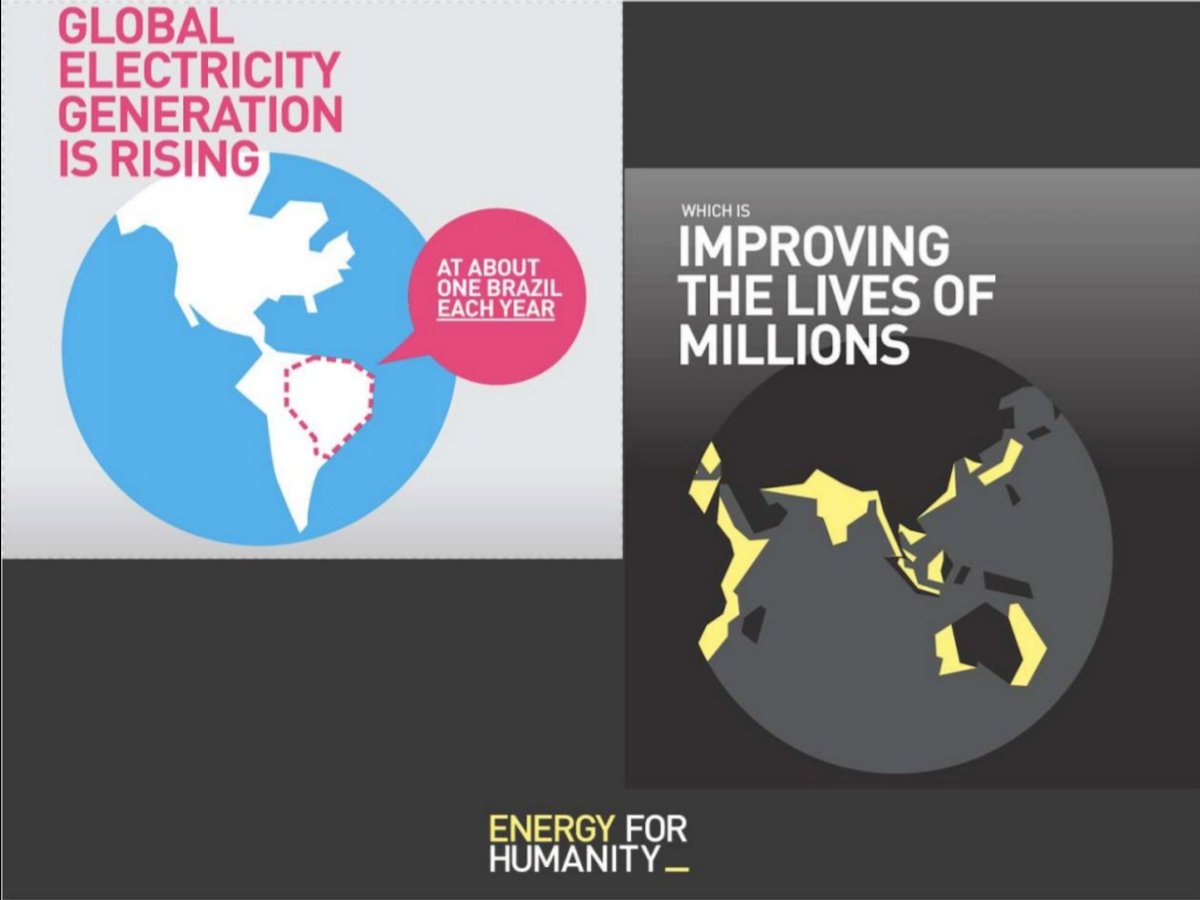There has been lots of discussion of IPCC IAM scenarios, particularly focusing on the supply side: eg assumptions on solar PV costs and coal consumption in #RCP85isBollox.
But what do these models and scenarios assume on the demand side? This is just as important.
Thread.
Firstly, for this I'm using the data so kindly provided here: data.ene.iiasa.ac.at/iamc-1.5c-expl…
Whatever you think about IAMS etc, this level of data provision is really welcome.
I'll focus on baseline and 2C scenarios
I find this a odd: techs for trans electrification are more advanced than process heat electrification; longer capital cycles in industry versus transport should surely mean that we should see, in a baseline, evidence of electrification in transport first.
These seem to assume that electrolytic H2 is still more expensive than fossil H2 with CCS by 2040. Average world capital costs of electrolytic H2 are 1500 USD2010 by 2050. Implied learning rate is 4% per year between 2020-2050.
This seems conservative ...
So to conclude:
1. We need to pay just as much to demand side in scenarios, as to supply. "It's the demand side, stupid", should be our moto.
2. Ins several respects the FEC transition in IAMs seems odd/conservative: big models don't seem to represent FEC transition well.
3. Many of the things that people question about IAMs (time profile of abatement, reliance on CCS, BECCS, residual fossil) stem as much from what happens on demand as the supply.
4. This is a twitter thread: someone should do a peer reviewed paper on this.






